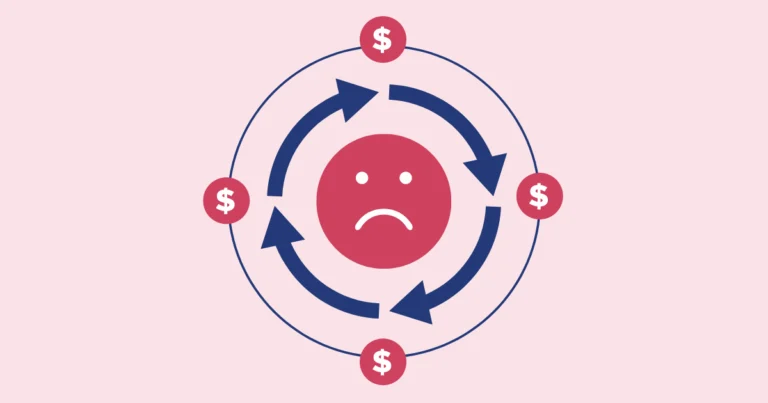Key account management or KAM is not a new concept; it was first introduced in the 1970s and is more relevant than ever in today’s complex and increasingly competitive business environment. If you take a closer look at your company’s client list, you will undoubtedly realize that losing some of these customers would be really bad news for your organization. That might be because certain customer accounts represent a disproportionately large chunk of your revenue, add to your credibility in their industry, are a valuable prospect referral source – or, all of the above.
So how do you make sure you don’t lose any of your key clients to your competitors?
The answer: Key account management.
And how can you tell your KAM strategy is delivering results?
The answer: Customer feedback.
In this article, you’ll learn:
- What is key account management
- What is a key account
- What is a KAM strategy
- The role of customer feedback in KAM
- How to use feedback to develop your key account management strategy
- How the customer experience impacts key account management
Let’s dig right into it.
Key account management definition
Key account management (KAM) is a business term that describes a systematic approach to managing and strengthening the relationship between an organization and its most important customers in a way that promotes the co-creation of mutual value and the realization of mutually beneficial goals.
When successfully implemented, KAM enables you to effectively engage with your customers and grow key accounts into long-term relationships that will result in considerable benefits such as increased profitability, lifetime value, and trust.
What is a key account?
The term key account refers to a customer, be it another business or an individual, with whom your organization has moved past a transactional, vendor-buyer relationship to one that is defined by the level of trust it inspires. The main difference between key accounts and all other standard customer accounts is that your company’s future is hugely linked to how successful these customers are when using your products or services.
What is a key account management strategy?
A key account management strategy is the process that allows you to identify or target key accounts, implement an approach to nurture and develop a mutually beneficial relationship with said accounts, and maximize results and return on investment (ROI).
How to ensure a successful KAM strategy
Key account management often requires significant investment to maximize ROI. Therefore, your KAM strategy should clearly reflect your business goals and produce desirable outcomes to justify the monetary expense it demands. Here are our tips to ensure a successful key account management strategy.
Align your business processes to support key account management
A 2017 study found that only about one-third of organizations have a formal approach to key account management, and more than 10% do not engage in account planning at all. A successful key account management strategy, however, requires a formalized approach that complements organizational goals and is systematically implemented.
Define key accounts
Take a close look at your client base and make a clear distinction between key accounts and other accounts that have a large impact on your revenue stream. The easiest way to identify key accounts is to shift focus from the accounts’ financial worth to their strategic value.
Less is more
If you are just beginning to implement a key account management strategy, consider starting small. Identify a handful of key accounts and build a comprehensive strategy off of those. The small number of accounts will give you the flexibility to develop, practice, and evaluate your KAM approach. You can always classify more key accounts later on.
Examine your key accounts and offer solutions
A successful key account management strategy requires a continuous commitment to ensuring customer success. This means that key accounts expect you to listen to their problems, fundamentally understand their objectives, and offer solutions tailored to their needs. This approach often demands significant effort and a notable investment but when properly implemented can yield enormous results.
Redefine the role of the sales manager
In the context of key account management, the role of the salesperson is significantly enhanced to best suit the expectations of the customers, who now assume a partner role. Within that context, salespeople need to understand what their role entails and how it affects the overall organizational strategy.
The role of customer feedback in key account management
Key account managers are tasked with developing and maintaining vital relationships but, for how long can you keep a key account without engaging in conversation with them? The element of effective communication is vital for KAM to deliver the results it promises. On that note, active listening is one of the main components of any information exchange and as a KAM you can rely on feedback and its many applications to carry out your duties and stay on top of things with your strategic business partners.
How to use feedback to develop your account management strategy
Initiating a feedback dialogue with your clients will allow you access to new information, clarify their needs, and enable you to translate feedback data into a plan of action to back up your overall key account management strategy. Let’s take a closer look at how feedback can help further develop your KAM strategy.
Identify dissatisfied customers
Many times, dissatisfied customers won’t reveal they’re not happy unless they are nudged to do so. In other instances, clients sense dissatisfaction with your product or service but can’t quite pinpoint the reasons behind it. It’s your job to understand the level of customer satisfaction your key accounts are experiencing, dig deeper into the reasons behind it, and figure out ways to overturn the situation before you are replaced by a competitor.
Anticipate clients’ needs
As mentioned earlier, key accounts expect full-fledged solutions to their problems. The development of solutions not only creates innovation but, also fortifies the extent to which you’re linking your future to that of your client. In order to achieve mutual value, you need to put yourself in a position where you can predict clients’ needs and inspire confidence in your ability to be there for them in challenging times.
Establishing feedback processes will enable you to reach out to your customers, figure out how to tailor your service to their needs, identify potential issues, accommodate market shifts, and more. The key is to be consistent, address issues before they become too much to handle, and proactively manage the relationship.
Develop solutions
Customer feedback is a great source of information. Successful feedback analysis might lead you to uncover customer pain points and develop solutions to not only address them but, but also enhance your offering. What’s more, acknowledging the feedback you receive and developing solutions based on it will score you extra points as:
- Clients feel listened to and valued
- You’re enhancing their level of trust in you
- You reaffirm your commitment to building a deep, long-lasting relationship
- You encourage your customers to provide truthful and honest feedback
The impact of the customer experience on KAM
Key account management is all about developing and managing long-term customer relationships. The customer experience is all about how your clients perceive their interactions with your business. Based on this, it’s easy to understand that a great customer experience on different touchpoints across the customer journey has an immediate impact on the success of key account management. After all, KAM aims to make the customer journey last for a long time. As a result, systematically measuring the customer experience of your key accounts will shed some light on how your most prized customers really feel about interacting with your business and to which degree you have made good on your promises to them.
Did you like the post?
You might also like:
Hot and trending:

Surveypal
Everything you need to lead and improve your customer experience. Learn more at surveypal.com, or







